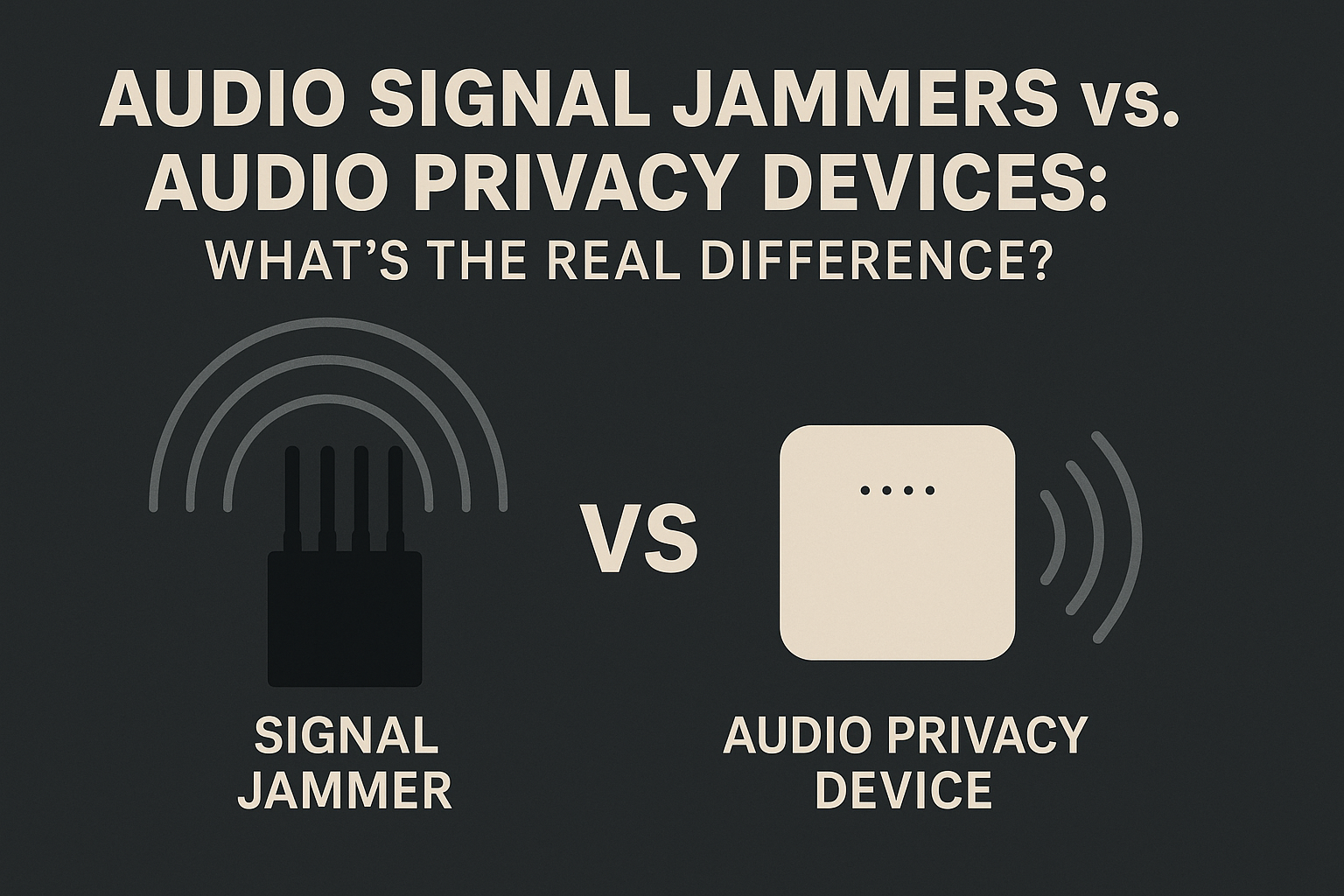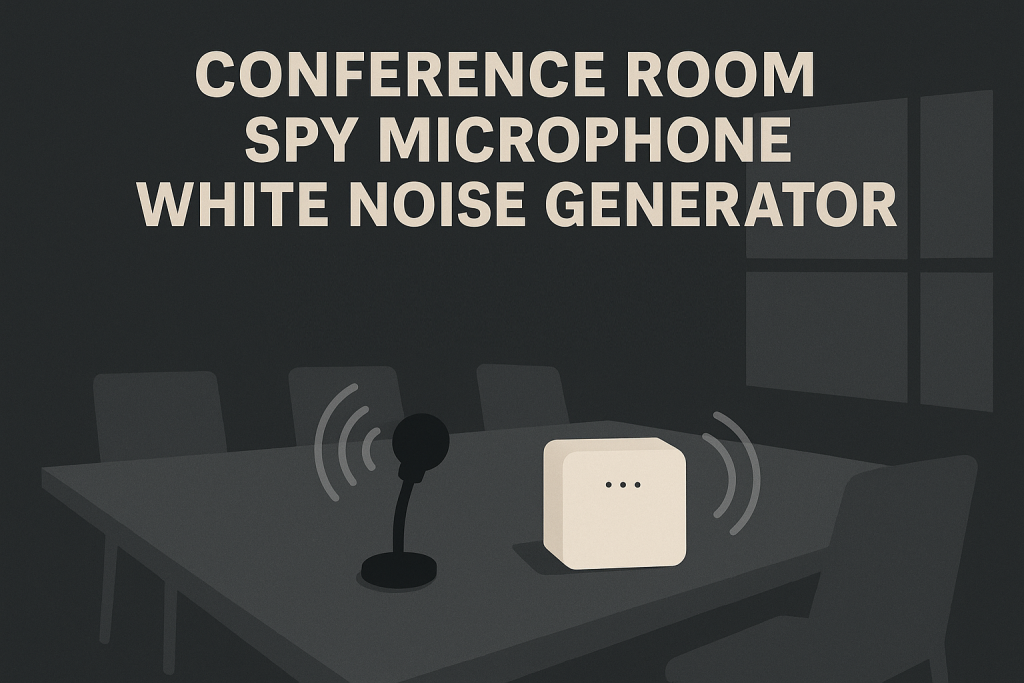In our hyper-connected world, ensuring the privacy of conversations is becoming increasingly challenging. With smart devices always listening and digital surveillance growing more sophisticated, the question arises: how can we truly protect what we say?
Many have heard of signal jammers or audio jammers, but understanding the crucial differences between RF signal blockers and audio privacy devices is vital-especially when it comes to legal use and effectiveness. Let’s break it down.
📡 What Is a Signal Jammer?
A signal jammer is a device that emits radio frequency (RF) interference to block wireless communication signals such as mobile networks (GSM, 3G, 4G, 5G), Wi-Fi, GPS, and Bluetooth. The goal? To disable wireless functionality in a given area-often within a 5 to 50-meter radius.
However, RF jammers are illegal in many countries, including the U.S., UK, and EU, due to the risks they pose to emergency communications and public safety. For example, in 2013, a New York commuter used a jammer on the subway to silence noisy passengers. The result? A hefty fine and a federal investigation. Blocking emergency calls or aircraft signals is not only dangerous-it’s criminal.
Legal Note: According to the FCC (Federal Communications Commission), unauthorized use of RF jammers can result in fines up to $112,500 and imprisonment.
🔊 What Are Audio Privacy Devices?
Unlike RF jammers, audio privacy devices don’t block radio signals. Instead, they protect speech privacy by disrupting microphone recordings-without affecting network connectivity.
These devices emit ultrasonic sound waves, usually between 20-40 kHz, which are inaudible to humans but interfere with the way microphones pick up and reproduce sound. The result? Recordings turn into garbled static or become entirely unintelligible.
Audio privacy devices are used in:
- Boardrooms and executive meetings
- Legal consultations
- Private residences
- Government or defense environments
🎧 New Research: A 2024 study from Carnegie Mellon University found that ultrasound-based jamming was effective against 93% of tested smartphone and laptop microphones, including those from Apple, Samsung, and Lenovo.
⚖️ Key Differences: Jammer vs. Privacy Tech
| Feature | Signal Jammer | Audio Privacy Device |
|---|---|---|
| Blocks wireless networks | ✅ Yes (GSM, Wi-Fi, GPS, etc.) | ❌ No |
| Disrupts microphone input | ❌ No | ✅ Yes (via ultrasonic interference) |
| Legal for private use | ❌ No (in most countries) | ✅ Usually yes, if not used maliciously |
| Affects nearby devices | ✅ Yes | ✅ Only microphones |
| Use case example | Shutting down all signals in exam room | Preventing secret recording in meetings |
🛡️ Why Audio Privacy Matters More Than Ever
Think it’s just about nosy neighbors or curious coworkers? Think again.
In 2023, a tech startup in Silicon Valley lost an estimated $12 million after a competitor obtained voice notes recorded from a casual café brainstorming session. The competitor used the stolen ideas to fast-track a similar product. In today’s environment, your voice is data-and data is currency.
“Every device with a mic is potentially a spy audio recorder device-your phone, your smartwatch, even your smart lamp.”- Edward Snowden, digital privacy advocate
🔍 Real-World Tools to Consider
1. Ultrasonic Audio Jammers
These are sleek, silent guardians that render recording devices useless. Perfect for confidential meetings or personal conversations you want to keep… personal.
2. White Noise Generators
Emit audible sound-like fan noise or ocean waves-to mask speech. While less stealthy, they’re effective for group discussions or open areas.
3. Faraday Bags or Signal Lock Boxes
Want total radio silence? These enclosures block all wireless signals from reaching your phone or device. Ideal for high-security meetings or storage.
🏠 Where and How to Use These Devices Safely
- Business Meetings: Keep intellectual property secure during strategy sessions.
- At Home: Prevent smart speakers or phone assistants from capturing personal conversations.
- Legal Discussions: Lawyers and clients can ensure attorney-client privilege is not accidentally breached.
- Casual Chats: Even lunch table banter can benefit from added privacy.
✅ Best Practices for Maximum Privacy Protection
- Know Your Space: Ultrasound works best in enclosed rooms where walls reflect sound.
- Use Layered Defense: Combine an ultrasonic jammer with a Faraday box for full-spectrum protection.
- Run Tests: Record your voice with and without the device active to test effectiveness.
- Stay Legal: Don’t use jammers in public places where others have a right to record (like journalists).
- Inform Participants: In shared spaces, ethical use includes notifying others that recording devices won’t function.
🔚 Final Thoughts
In the era of constant surveillance, protecting your spoken word is no longer optional-it’s essential. Understanding the difference between audio signal jammers and audio privacy devices can mean the difference between breaking the law and protecting your rights.
Whether you’re a corporate executive, a privacy-conscious individual, or someone simply tired of being “listened to,” the tools exist to reclaim your voice. Choose wisely-and stay informed.


